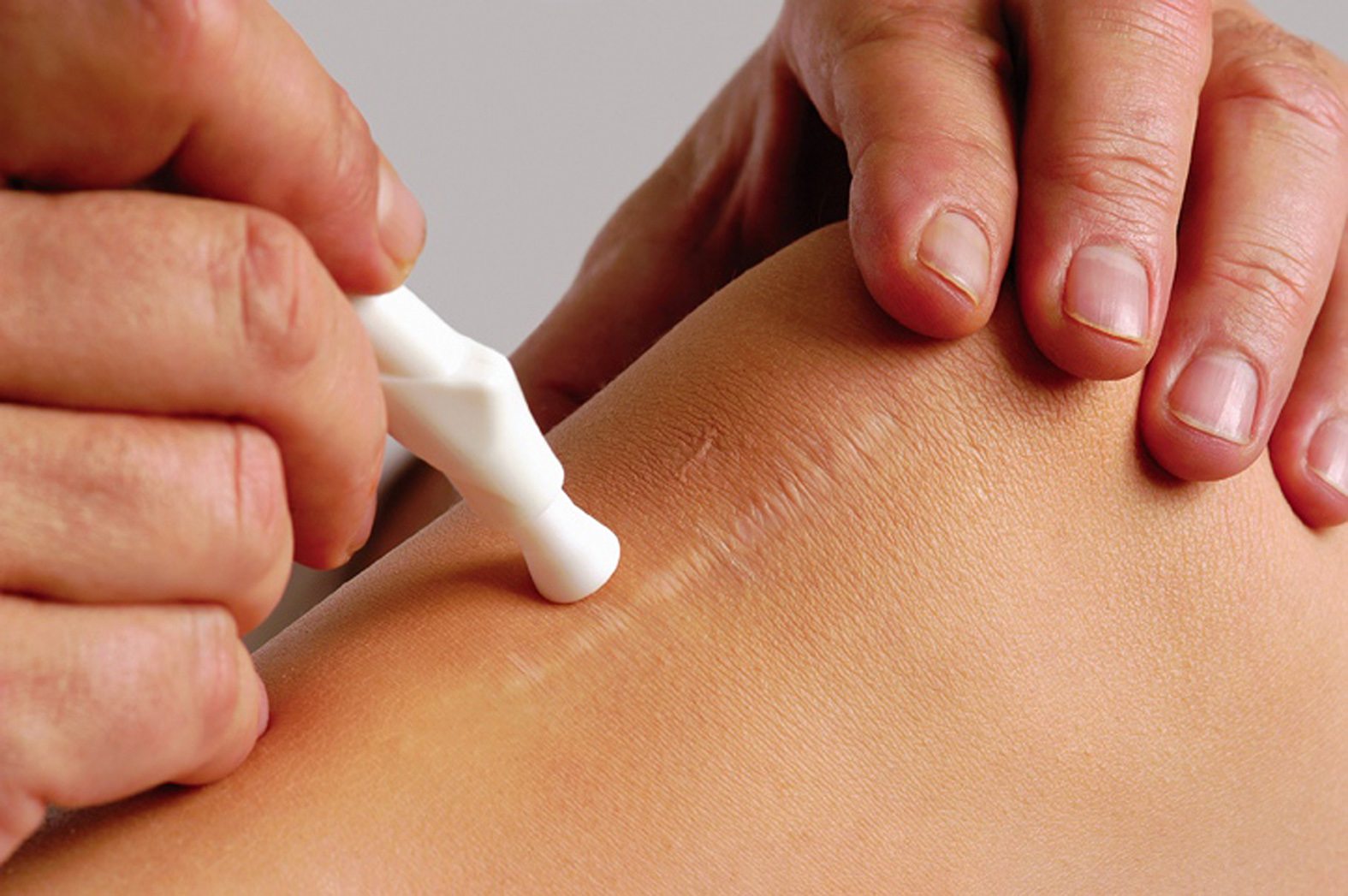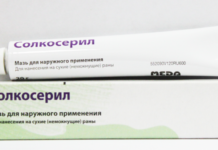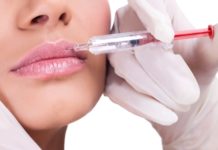Keloid scar is one of the most unpleasant consequences of skin lesions. This type of scar occurs 6-12 months after wound healing. Scarring is susceptible to people of all ages, but most often they occur in the age category of 10-30 years. Keloid scars grow within 2 years, after which they stabilize. The formations cause aesthetic inconvenience, and in some cases they can become malignant, turning into a malignant tumor.
Material Content:
What is a keloid scar?
Keloid - a special type of scar, consisting of immature connective tissue. Under a microscope, it looks like elongated and convoluted bundles of collagen. Scar tissue tends to grow, affecting healthy skin. The skin of the face, earlobes, and chest are most susceptible to the formation of keloid scars.
Scar formation begins with the appearance of a thin film of squamous epithelium. After 10 days, it coarsens and hardens, acquires a bluish color. After another 2.5 weeks, the keloid swells, begins to protrude above the skin surface by 3-10 mm, becomes covered with dense plaques. The growth of the neoplasm can continue for 1.5-2 years, after which it stops.
Causes and Cases
The reasons for the development of keloids have not yet been established.It is known that the formation of a scar of this type can occur both with severe extensive injuries and with small, almost imperceptible injuries like an insect bite. Often keloids form at the site of traumatic amputation of moles. There is no connection with the severity and extent of damage in keloid formations.
It is known that the growth of the scar according to the keloid type often occurs in the following cases:
- burns;
- wound healing by secondary intention;
- hereditary predisposition;
- puberty;
- pregnancy;
- strong pigmentation of the skin;
- the presence of injuries at the sites of the most frequent occurrence of keloids (earlobes, face, chest).
In addition to the above, there is an opinion of experts indicating the relationship of keloids with existing immunodeficiency (including HIV) and hormonal disruptions in the patient's body.
Note: keloids can reach very large sizes. In the history of medicine, cases have been noted when the scar occupied almost the entire surface of the patient's face or chest. Such neoplasms cause not only aesthetic, but also physical inconvenience and require compulsory treatment.
A keloid scar appeared after removal of the mole. What to do?
Remote moles are one of the risk factors for uncontrolled proliferation of connective tissue and the formation of keloid. The appearance of a scar is not a critical situation, however, it requires the attention of a specialist. It is no secret that the treatment of diseases at the initial stage of their development is simpler, with lower costs both on the part of the patient and the medical institution. Therefore, when the first signs of a keloid scar appear, it is recommended to consult a specialist - a dermatovenerologist.
It should be remembered that a mole is a risk factor not only for keloid scars, but also for basal cell infiltrating skin cancer. This is another argument in favor of visiting a doctor and refusing attempts at self-treatment. It is almost impossible to distinguish one disease from another without a special examination. For this, it is necessary for the doctor to take a biopsy (scraping of the neoplasm cells) and send it for histological examination.
Classification of Colloidal Scars

The classification of keloids is made according to the time of their existence and stage of development.
According to the time of existence, they distinguish:
- young keloids - age less than 5 years, continuing growth, color bluish or purple.
- old keloids - over 5 years old, growth does not continue, the scar looks wrinkled, sometimes pale.
According to the stage of development, keloid scars are:
- epithelized;
- swollen;
- compacted.
Regardless of the stage of development and the time of existence, the scars of this type do not disappear and do not decrease in size. Moreover, in most cases, they can exist for many years without causing noticeable physical inconvenience to the patient.
Symptoms of keloid scars
Symptoms of keloid scars are specific enough to recognize this pathology with a certain degree of probability without the intervention of a specialist. Keloid is characterized by going beyond the wound, which is not observed with other varieties of cicatricial changes. In addition, the scar rises above the skin level by several millimeters, has a crimson or cyanotic color. In the initial stages of formation, it may have pink hues.
Subjectively, the patient experiences such sensations as pain in the area of scar formation, a feeling of tightening of the skin, paresthesia. Burning, itching, and increased sensitivity of neoplasm tissues to tactile and thermal effects may be present.
The final diagnosis of keloid is carried out only after a laboratory examination of scar tissue. Moreover, a high amount of collagen is determined in the sample, 6-8 times greater than in hypertrophic scars. The fibers are crimped, the connective tissue is immature.Unlike keloid, the growth of connective tissue in cancer occurs in the form of strands that divide the tumor into distinctive lobules. Moreover, ulceration is usually present in the center of the neoplasm. For scars of keloid type, ulceration is uncharacteristic.
Another disease that looks like a keloid is dermatofibroma, a benign intradermal tumor. Its main difference from keloid is that it forms on areas of intact skin. With histology, the presence of fibroblasts and fibrocytes with large nuclei, as well as inclusions of lipids and iron, are noted in the biomaterial. Keloid tissues do not possess such features.
Keloid scar treatment
Treatment of keloid scars can be carried out by several methods, the choice of which depends on the age, prevalence of the neoplasm, as well as its sensitivity to the methods of chemical exposure.
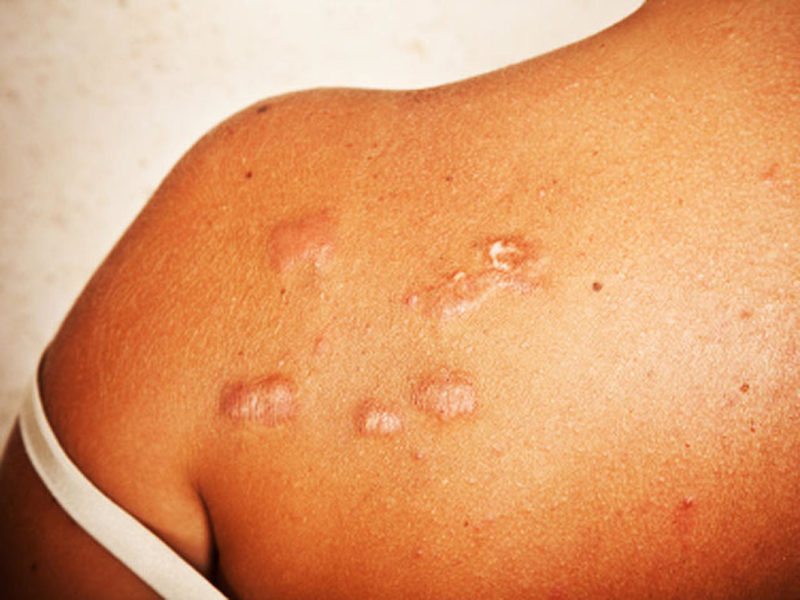
To rid the patient of a disturbing scar, the following treatment methods are used:
- pharmacological effects;
- laser resurfacing;
- gels and ointments;
- cryodestruction;
- physiotherapy;
- surgical excision;
- pressure therapy;
- corticosteroid injections.
Drug treatment
The treatment of keloids with the use of medication is not aimed at completely removing the scar, but at stopping its growth and reducing visualization. The main substance responsible for the density of the neoplasm is hyaluronic acid. Therefore, the treatment is based on drugs that can break it down and make the scar less dense, bright and noticeable. For the breakdown of hyaluronic acid, enzyme agents (lidase, rhodidase) are usually used, which are injected directly into the pathology area, with a course of 5 to 20 injections. This method of treatment is most effective against young keloid scars.
It is sometimes possible to stop the growth of connective tissue by using interferon. The drug enhances local immunity, which leads to suppression of scar growth due to immune defense mechanisms. During the first two weeks, the medicine is injected into the scar daily, after 1 time per week for three months. Antibacterial agents may be prescribed to speed healing during scar infection.
Laser resurfacing
Laser resurfacing of keloid scars is a virtually painless and safe method of influencing a neoplasm. The essence of the procedure is the layered evaporation of scar tissue using a laser beam. In practice, an erbium and neodymium laser is most often used. The first acts solely on the surface layers of the scar, the second is able to penetrate to a depth of 8 mm, providing a deep effect.
Using a laser, you can make the scar almost invisible, but it can not be completely eliminated. To achieve the result, several (3-5) procedures are sufficient. The disadvantage of this method is its relatively high cost. For example, 3 procedures to remove a scar on the forehead will cost 18 thousand rubles, on the chin - 12 thousand rubles.
Gels and ointments for keloid scars
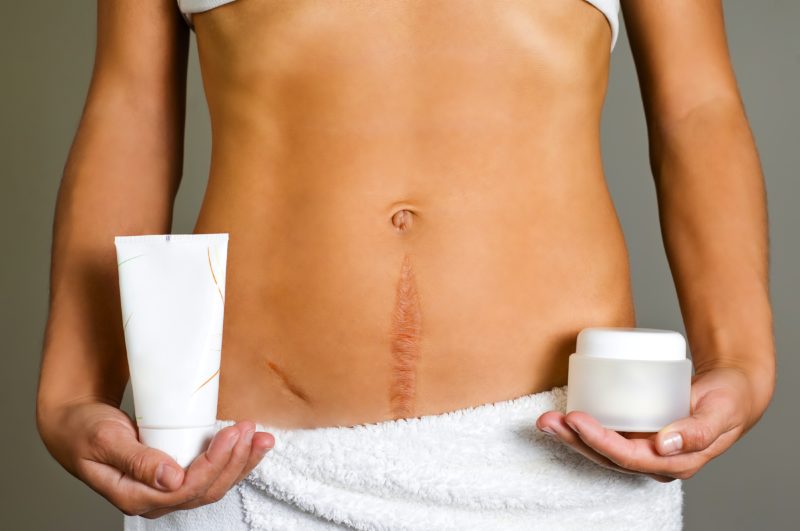
With the help of gels and ointments, softening and lightening of the scar can be achieved. The use of these dosage forms is painless and comfortable for the patient. Treatment takes a lot of time. Sometimes the course takes about six months.
Among the drugs for the treatment of keloids include:
- Contractubex inhibits the development of the scar, helps to reduce its size. The gel should be used 3 times a day, rubbing it into the scar tissue. The course of therapy is 1-2 months.
- Kelofibrase - A specialized drug for the treatment of keloids. It is applied 2 times a day with a thin layer, after which it is rubbed until completely absorbed by massage movements. The course of treatment is until an acceptable result is achieved (usually about a month).
- Dermatix applied to clean, dry skin with a thin layer.After this, the drug is allowed to dry for 5 minutes. Rubbing is not required. The procedure is carried out 2 times a day. The course of treatment is 2 months.
Therapy with creams and ointments as an independent method of treatment is not always effective. In most cases, topical application of drugs is combined with other treatment methods. The cream is also used to prevent relapse after surgical removal of the keloid.
Cryodestruction
Cryodestruction - a method based on a low-temperature effect on the scar. Liquid nitrogen, which is used as a refrigerant, freezes water-rich keloid tissues, disrupting its structure. In most cases, cryodestruction is used in combination with microwave therapy, which destabilizes fluid residues in tissues and makes exposure to cold more effective.
Removing scars by freezing is almost painless, but local anesthesia can be used to increase patient comfort. For best results, the doctor prescribes 2-3 procedures. In the presence of a small keloid, one visit to the clinic may be sufficient.
Physiotherapy
The physiotherapeutic effect on keloids is a form of drug therapy. As a rule, patients are prescribed electrophoresis, with which drugs (hormones, lidase, collagenase) are injected into the depths of the scar tissue. This method of administration is preferable relative to injection, as it does not cause discomfort to the patient and allows you to evenly distribute the drug across all tissues of the tumor.
Surgical excision
Surgical excision is one of the oldest, however, not very effective methods of dealing with keloids. The essence of the method is the mechanical removal of altered tissues, followed by suturing of the wound. In place of the keloid, a thin, inconspicuous scar remains, which is easier to correct with pharmacological methods. The disadvantage of the surgical method of removal is a high risk of recurrence of the disease.
Small keloids are removed on an outpatient basis under local anesthesia. Massive growths of connective tissue may require the introduction of the patient into general anesthesia and hospitalization for several days. In combination with surgical removal, compression techniques are applied to the operated area.
Pressure therapy
The essence of pressotherapy is to squeeze the area on which the keloid is formed, with the compression of the capillary network supplying it with blood. Against the background of local ischemia, the synthesis of collagen and connective tissue decreases, the growth of the scar slows down, or stops completely. To create compression apply elastic bandages.
Pressotherapy is mainly used as an auxiliary treatment method. The compression period is 1-2 years, with periodic loosening and removing the bandage for a short time. The pressure on the affected area should not exceed 20-25 mmHg.
Corticosteroid Injections Against Scars
Corticosteroids have a pronounced anti-inflammatory effect. Therefore, they are used to treat young keloid scars, the growth of which is accompanied by an inflammatory process in the tissues. As a rule, electrophoresis or the traditional method of injection using a thin needle is used to administer the drugs. To achieve a therapeutic effect, 10-15 procedures are required, which are carried out every other day. As a therapeutic agent, dexamethasone or prednisone is used. The dosage depends on the size of the scar and can vary within very wide limits.
Traditional medicine
How to get rid of keloid scars at home? The fight against keloids can be carried out using traditional medicine.
The most popular recipes are:
- Apple vinegar. The surface of the scar is treated with apple cider vinegar, after which the substance is rubbed into the tissue.The procedure should be repeated daily, 2 times a day, for 3-4 weeks. Vinegar allows you to discolour the scar and make it less noticeable.
- Aspirin. 4 aspirin tablets should be crushed and poured with so much water to make a thick white paste. The composition is applied to the surface of the keloid and rubbed lightly into the skin. After the paste has dried, it should be washed off with running water. The course of treatment is 1 month, the multiplicity of the procedure is 2 times a day.
- Lemon juice. The substance is applied to keloid, after which it is triturated and left for 30 minutes. After the procedure expires, the composition should be washed off. Treatment is carried out twice a day for 2-3 months.

Folk remedies for the treatment of keloids usually do not lead to their complete disappearance, however, they make the scar soft and less noticeable. Small neoplasms may slightly decrease in size. Self-initiated treatment with traditional medicine is unacceptable. First you should visit a doctor to make sure that the scar is a keloid, and not other, more dangerous skin diseases.
Keloid scars are a serious cosmetic problem that can significantly lower a person’s quality of life. This is especially true for young patients. Modern technologies allow you to quickly and painlessly cope with this disease. It is necessary to consult a doctor in a timely manner, who can prescribe the right highly effective therapy. Self-treatment of keloids can lead to an aggravation of the situation.


